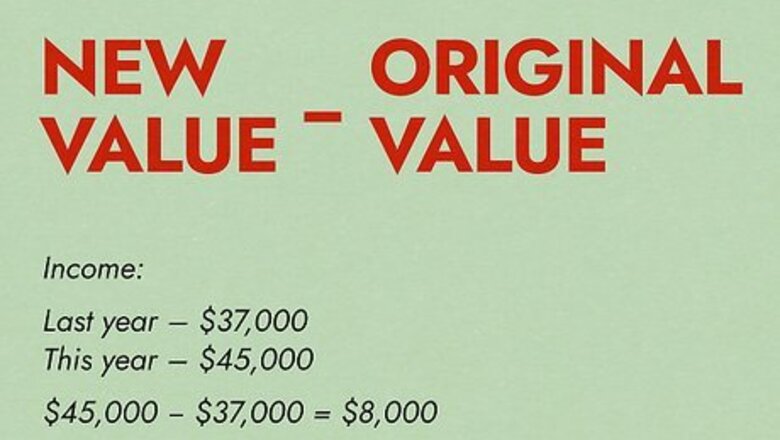
views
Using the Standard Equation
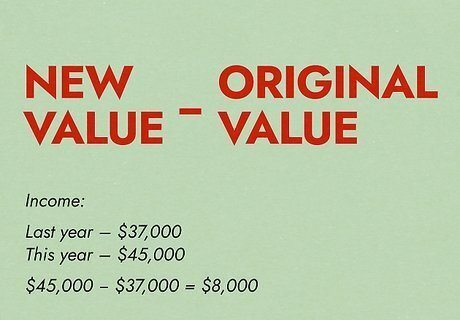
Subtract the original value from the new value. When calculating percent increase, the smaller number is the original (or old) value and the bigger number is the new (or final) value. The opposite is true when calculating percent decrease. You can use this formula to calculate either percent increase or percent decrease. If your answer is a negative number, rather than a positive one, then you know the percent change is a decreaseTip: When dealing with variables with more than one change in value, find the percent change only for the two values you wish to compare. For example, say you’re trying to figure out how much your income increased from one year to the next. If you made $37,000 last year and $45,000 this year, subtract 37,000 from 45,000, which is 8,000. Alternatively, in the world of retail, when a product receives a discount, this is often expressed as the product being “x% off” which is a percent decrease. If a pair of pants was previously sold for $50 and is now sold for $30, $50 is the original value and $30 is the new value. To start, subtract $50 from $30, which is -$20.
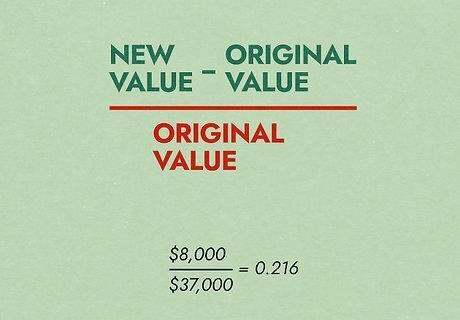
Divide your answer by the original value. After finding the difference between the numbers, divide that number by the original value, which is the smaller number if the percent increased or the bigger number if the percent decreased. Continuing the example, divide 8,000 (the difference between your incomes) by 37,000 (which is the original value). The answer is 0.216. Alternatively, dividing the difference (-$20) by the old value ($50) is -0.40. Another way of thinking of this is that the $20 change in value is 0.40 of the $50 starting point, and that the change of value was in the negative direction.
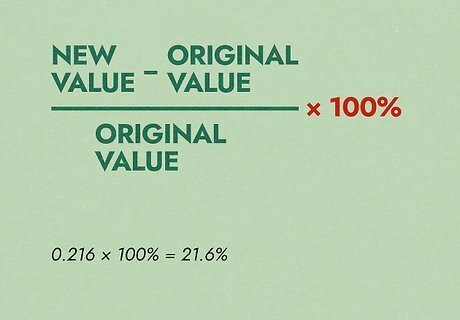
Multiply your answer by 100. To turn your answer into a percentage, all you have to do is multiply it by 100. Take 0.216 and multiply it by 100. In this case, the answer is 21.6, so your income increased by 21.6%. Alternatively, to get the final percentage, multiply the decimal answer (-0.40) by 100. -0.40 × 100 = -40%. This means that the new price of $30 for the pants is 40% less than the old price of $50. In other words, the pants are 40% off. Another way to think of this is that the $20 difference in price is 40% of the initial price of $50. Since this price difference results in a lower final price, give it a negative sign.
Calculating Percent Decrease in an Alternative Way
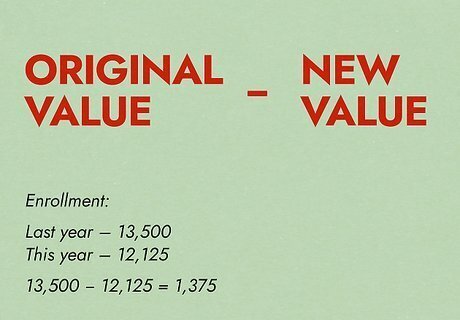
Subtract the new value from the original value. To calculate percent decrease using this formula, subtract the smaller number (the new or final value) from the bigger number (the original or old value). Note that this is the opposite of finding percent change using the standard equation. For instance, say you’re trying to figure out how much a school’s enrollment changed between years. If the enrollment for this year is 12,125 and it was 13,500 last year, take 12,125 away from 13,500, which is 1,375.
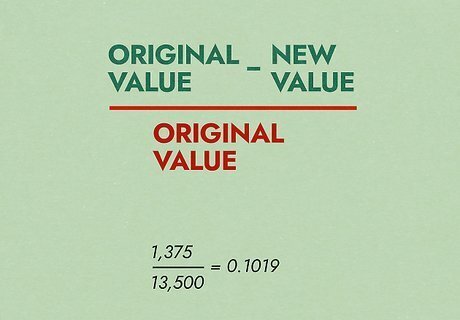
Divide your answer by the original value. Remember that when determining percent decrease, the original value is the bigger number. In this case, divide 1,375 (the difference between the numbers) by 13,500 (the original value), which is equal to 0.1019 (when rounded).
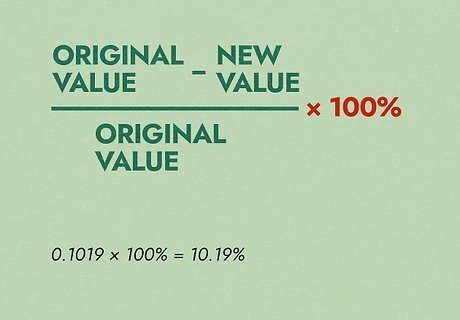
Multiply your answer by 100. Converting your answer from a decimal to a percentage is easy—just multiply the value by 100.Tip: If you use this equation and end up with a negative number, it represents a percent increase. Multiply 00.1019 by 100, which is 10.19. So, enrollment decreased by 10.19%.

















Comments
0 comment